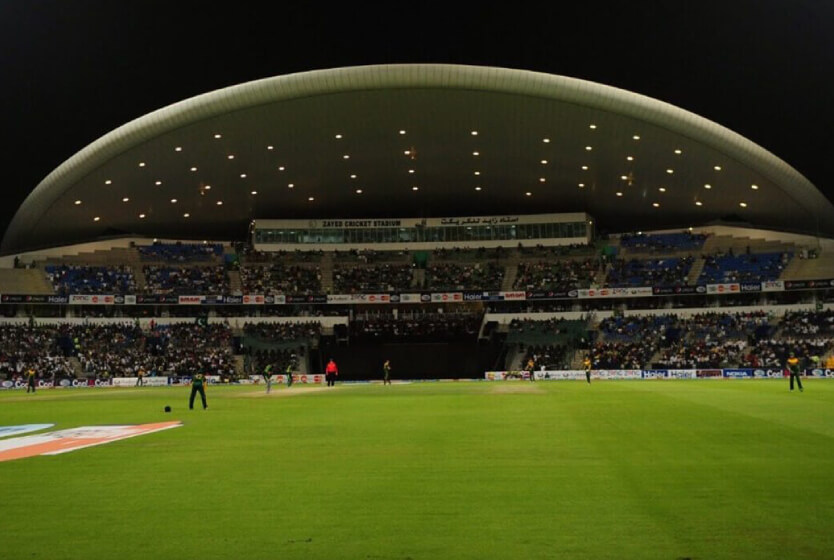
How PSL in the UAE Will Be Different From Pakistan
PSL returns to the UAE once again, this time due to the COVID pandemic. How will the move affect the players and teams?
With the rest of the Pakistan Super League (PSL 6) action moving to the Emirati dunes, a shift in the dynamics is nearly certain. For one, it’s going to be swelteringly hot in Abu Dhabi in June, with the temperatures expected to oscillate around the 40 degrees Celsius mark. Customarily, the UAE does not accommodate premier cricket competitions at this time of the year in light of the extreme weather conditions at play. PSL franchises are reportedly mulling over the usage of ice vests and coconut water to combat the debilitating settings.
However, this is not the only thing that the franchises have to come to grips with in the Abu Dhabi leg of the edition. With surfaces expected to be on the sluggish side, the impact of slower bowlers on the rest of the PSL 6 may inflate. In this article, we shed light on the numbers pertaining to the breakdown between pace and spin across all PSL matches held in the Emirates compared with the ones conducted in Pakistan. Furthermore, we try to dissect how the teams may rejig their strategies as PSL temporarily relocates to a familiar site.
PSL bowlers, both the quicker men and the spinners, have generally fared better in the UAE than in Pakistan. While there is not much that separates the pace-bowling figures from PSL matches played in the UAE and Pakistan as far as the averages and dot ball percentages are concerned, there is a stark contrast to how the spinners have gotten along in the two countries. Spinners have primarily been on the receiving end of things in Pakistan, averaging 33.56 at an economy rate of 8.08 with a dot ball percentage of only 35.10% – the lowest amongst the four categories. Spinners in the UAE, contrarily, have had fairly opposite numbers, as depicted in the graph below. They have been extremely frugal with regards to the economy rate, tying up things specifically during the middle overs and curbing the flow of runs.
The batsmen in PSL have followed a trend similar to how the bowlers have fared in the two countries. The batting-friendly conditions and the slightly quicker decks in Pakistan have led to bloated strike rates and sublime balls per boundary rates. A notable insight from the graph, though, is how difficult the batsmen have found it to get the slower bowlers away when playing in the UAE. A meager strike rate of 116.39 coupled with a balls per boundary rate north of 7 indicates that spinners have routinely kept things under control in the UAE.
To further investigate the impact spinners have had in the UAE-held PSL games, we segregate the bowling data into two phases, powerplay and middle-overs, and scrutinize them individually.
A glimpse at the powerplay bowling figures suggests that the difference between how the bowlers, both pacers and spinners, have performed in the UAE and Pakistan is plain as day. Bowlers in Pakistan have generally copped greater punishment when the field restrictions are in place, with pacers and spinners both going for over 8 runs an over. This is completely dissimilar to how things usually pan out for bowlers in the UAE, as illustrated below.
Similarly, bowlers in the UAE have been more economical in the middle-overs phase, too. This is the time when captains turn to their spinners to tighten the screws on the opposition and induce mistakes. With the field spread out during this phase of the game and the usual slow surfaces to work with, spinners tend to keep it nice and steady to stem the flow of runs. There is nearly a run’s difference in the runs conceded per over by spinners bowling in the UAE and Pakistan, which is fairly hefty in the shortest format.
Past PSL data also exhibits the augmented significance of spinners in the UAE by highlighting that captains tend to turn to spinners in the powerplay and middle-overs phases more often in the UAE than in Pakistan. Spinners are called up more frequently in the middle phases of an innings in the UAE, bowling more than 50% of the deliveries during the specified phase. On the other hand, spinners are used nearly 10% less in the middle-overs in Pakistan, which can, in turn, be linked to their relative ineffectiveness with the ball: averaging 36.21 and going at nearly 8 runs per over.
If we study the overall and phase-wise batting breakdowns of the UAE and Pakistan, the difference seems more pronounced than ever. Batting averages and scoring rates are higher across all three phases of the PSL games held in the UAE than those played in Pakistan.
A sneak-peek into the team-wise bowling breakdown furthers the point. All PSL teams have historically conceded more than 8 runs per over in Pakistan, on average. On the contrary, their economy rates, averaged across all the Emirates-based matches they have featured in, drop below 8, with Peshawar Zalmi’s 7.57 being the lowest amongst the lot. The bowling averages, too, progressively improve with Multan Sultans the exception in that case.
The data backs the notion that the UAE’s surfaces are traditionally more welcoming towards bowlers, especially slower bowlers. As the tournament resumes, we may witness marked amendments in team strategies and game combinations relative to the first leg of the competition. More than anything, the past data points towards more balanced duels between bat and ball for the rest of PSL 6. The team that both handles and bowls spin well should be in with a decent shout of clasping the silverware.







Leave a Reply